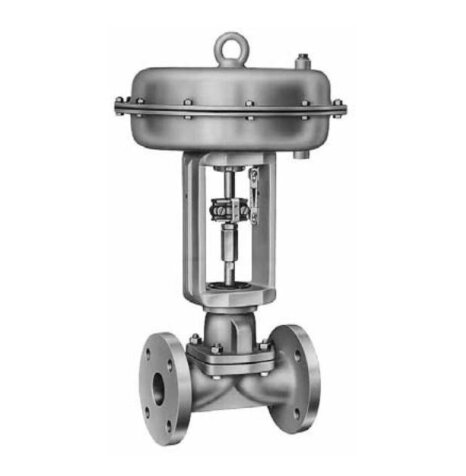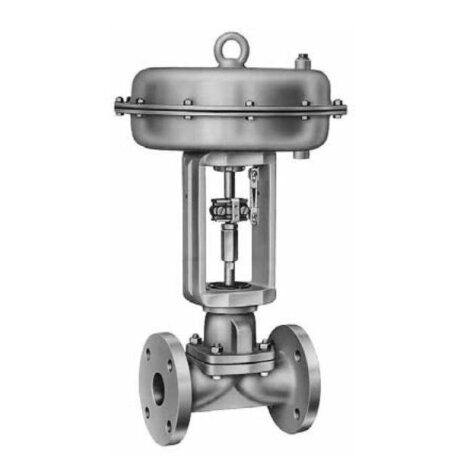Installation and Maintenance of Pneumatic Diaphragm Control Valves
On this page
Pneumatic diaphragm control valves play a crucial role in industrial fluid control systems, and their unique design and operational requirements determine the importance of correct use and maintenance. To ensure that the valve can operate reliably under various working conditions, it is essential to understand its material properties, applicable environments, installation requirements, and methods of operation and maintenance. The following will provide a detailed introduction to these key aspects to help you optimize the use of pneumatic diaphragm control valves and extend their service life.
The design and performance of pneumatic diaphragm control valves are influenced by their material composition and the environment in which they are used. Understanding these factors helps to correctly select and use the valves to ensure their optimal performance in various applications.
Pneumatic diaphragm control valves are mainly composed of metal and rubber materials. The metal parts are usually responsible for structural strength and pressure resistance, while the rubber parts provide sealing and flexibility. However, rubber can be easily damaged in corrosive media, so special attention should be paid when selecting the medium.
Pneumatic diaphragm control valves are suitable for general industrial media but are not suitable for use in high-temperature or high-pressure environments. The working environment temperature should be controlled between -20°C and +60°C, and the relative humidity should not exceed 90%. High humidity and extreme temperatures may cause the rubber to age, affecting the performance and life of the valve.

When installing a pneumatic diaphragm control valve, it is necessary to follow some key requirements to ensure the normal operation, stable performance, and long-term reliability of the valve. The following are detailed installation requirements.
Pneumatic diaphragm control valves require an air source connection, so dry, clean compressed air must be used during installation. Moisture and impurities may cause corrosion or blockage inside the valve, affecting its normal function. The cleanliness and stability of the air source system should be ensured before installation.
It is crucial to make the correct pipeline connections according to the design requirements. Do not arbitrarily change the connection method or use pipes that do not meet specifications, as this may limit the function of the valve or cause faults. Ensure that the pipeline connections are secure and well-sealed to prevent leaks.
The use of the valve should be regulated according to its rated pressure to avoid exceeding the maximum bearing capacity of the valve. Operations beyond the bearing capacity may cause the valve to rupture or be damaged, affecting the safety and stability of the system.
The sealing performance of the valve is crucial for its normal operation. When installing, choose the sealing material suitable for the medium to ensure reliable sealing. The choice of sealing material should consider the nature of the medium and the requirements of the working environment.
When installing a pneumatic diaphragm control valve, ensure that there is enough space around the valve for subsequent assembly, disassembly, transportation, and repair. The space should be large enough to facilitate observation, adjustment, and operation of the valve.
The diaphragm and valve should be stored in a cloth bag, placed on wooden shelves, and protected from direct sunlight and exposure to ozone to prevent compression by heavy objects. The valve should be kept fully open, especially the spring-type diaphragm valve which requires special attention. The flange end faces should be sealed with paper to prevent moisture and dirt from entering.
For valves installed underground, consider the convenience of operation. Extended shafts or T-type wrenches can be used for operation to ensure the normal use of the valve. The installation of large-caliber valves should have support to prevent damage due to the shift of the center of gravity.
Correct operation and regular maintenance are key to ensuring the long-term stable operation of pneumatic diaphragm control valves. The following are suggestions for the operation and maintenance of pneumatic diaphragm control valves.
During use, avoid over-closing the valve. Over-closing may cause the diaphragm to press against the valve body, affecting the normal function of the valve. When starting the valve, the opening speed should not be too fast, as a fast speed may concentrate the load force on the diaphragm screw, which may lead to diaphragm damage.
When replacing the valve, first cut off the fluid on both sides of the valve and take adequate personal protection, such as wearing protective clothing, masks, and gloves, to prevent harm to the human body from corrosive fluids. Operators should understand the specific steps of valve replacement to ensure the safety and smoothness of the replacement process.
Before installation, it is necessary to thoroughly clean the dirt in the pipeline. After installation, the valve should be kept fully open to expel the dirt inside the valve and test the sealing of the connections. Regularly inspect and maintain the valve to ensure its long-term stable performance.
Regularly check the working condition of the pneumatic diaphragm control valve, ensure the stability of the air source connection, and check for damage to the sealing materials. Regular maintenance and repair can extend the service life of the valve and ensure the reliability of its performance.
By mastering the material characteristics, applicable environments, correct installation methods, and effective operation and maintenance strategies of pneumatic diaphragm control valves, you can ensure that the valves always perform well in various applications. Regular inspection and maintenance not only improve the operating efficiency of the valve but also prevent potential faults, thereby enhancing the overall stability and safety of the system. Following these guidelines will help to achieve the best performance and long-term reliable operation of pneumatic diaphragm control valves.

